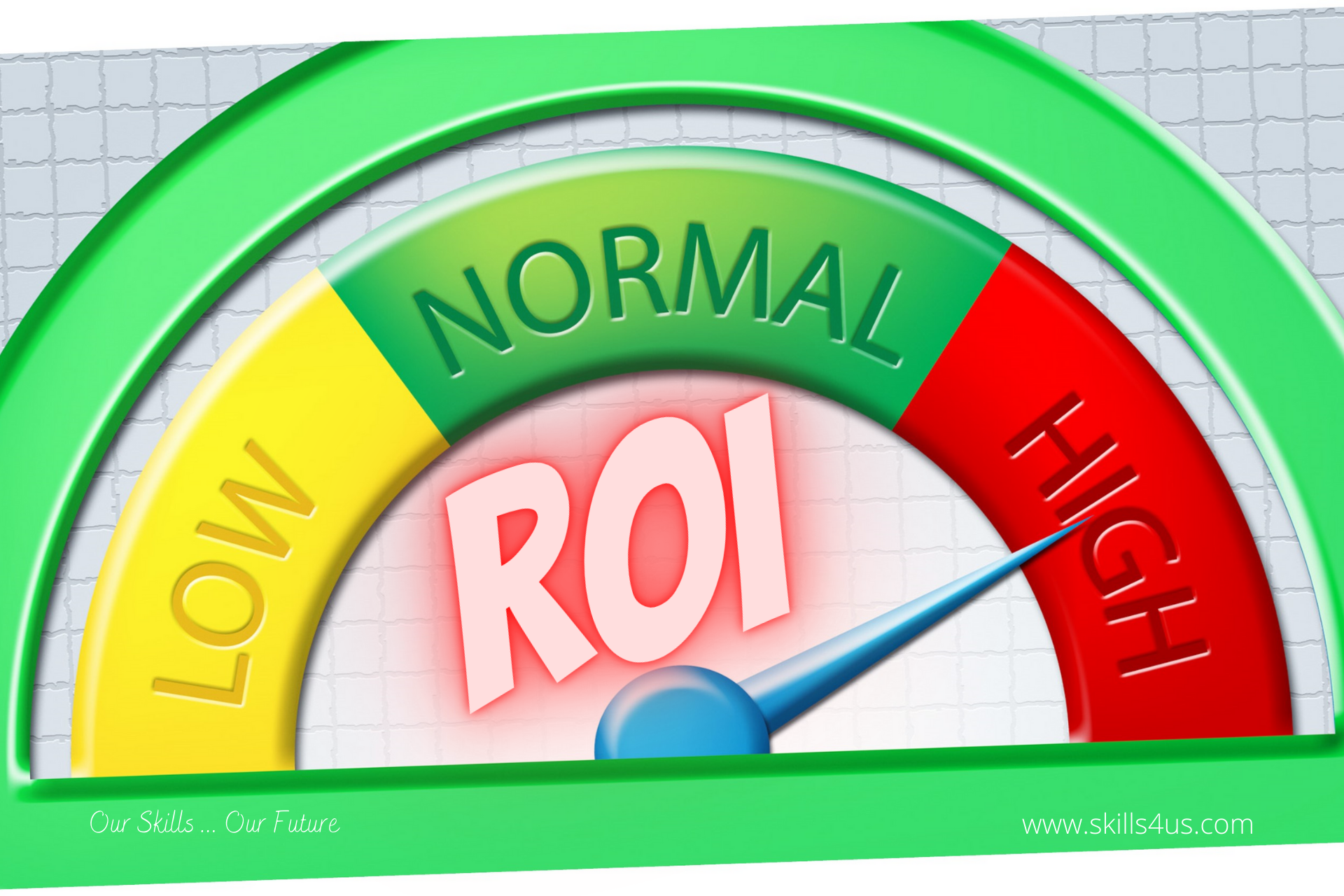Organizational leadership tends to take training for granted, but there is real value in well-designed and attractive training programs. As an HR professional in L&D, you know how necessary training is for employees. And how the numbers back it up. Therefore, tracking KPIs is crucial because everything in the business needs to demonstrate and maximize the ROI in training. Otherwise, you risk cutting your budget or, worse, having your entire program cut off. Therefore, you must have the proper training metrics to show your training program’s value to management and maximize the ROI.
The Importance of ROI
ROI is an economic indicator that shows the impact of your program in economic (financial) terms. It also tells you the program’s cost benefits, showing the value your training program adds to the organization. Such as increased profits or cost savings.
Understanding the ROI of training programs is essential in winning over organizational leaders. Suppose department and unit leaders recognize that training staff can have significant gains. In that case, they are more likely to support the budget investment and prioritize facilitating their group’s participation. Here are some practical measures that help you maximize your ROI in training:
1. Set Organizational Goals
As a distinguished work leader, and to bring about a positive change in the behavior of the workforce in the organization, you must set clear organizational goals for training. And communicate them explicitly and directly to your employees. So, that they realize what is expected of them before, during and after training. Because this leads to the actual and practical improvement of their knowledge and skills. Which contributes to the benefit of the training process.
2. Customize the Training
Since the primary goal is the ROI, it is essential to consider this aspect when selecting or determining the training program. This program must meet the needs of the work and the organization and lead to the necessary improvement and development in the skills and behavior of employees. Therefore, a training program should be specific, not general, and compatible with work requirements, aiming to fill gaps and provide the results you need.
3. Consult to Identify Skill Gaps
While conducting HR analyses to monitor and identify potential gaps in employee skills requires benefiting from the expertise of the work team first . And then, when needed, seeking external knowledge and consulting. Because the multiple and different points of view and advice help in a clear vision regarding identifying gaps in the workforce’s skills.
4. Create an Environment for Interest
As a successful manager, ensure you create an environment for employees to be interested in training by adopting a proactive approach to eliminating all possible and expected distractions. For example, no phones, no training left to attend meetings, no emails to answer, etc., uses of social media. So for your employees to get the most out of a training program, they need to reschedule their activities and tasks and allocate time to focus and pay attention during training.
5. Encourage Commitment
When your employees understand the importance and value of training, they will naturally realize its intended benefits for professional development. As a successful manager, you must guide and encourage your employees to understand what training might involve. And what they want to gain from it and stick to it.
6. Encourage Engagement and Focus
Since the training program is tailored to meet the needs of the business. It is crucial that you make the best choice of the providers of these programs. They must be good professionals and be able to adapt their methods to influence the trainees in terms of engagement and focus. As a successful business leader, you must follow up and ensure that your employees are engaged and focused during training. And communicate effectively with program providers to achieve this.
7. Promote Career Advancement
Personal and professional development is in business continuity and professional and career advancement. For example, promoting leadership behavior, positive systemic learning practices and application in the workplace, creating a supportive learning environment and aligning individual learning goals with organizational goals. Knowing that an organization that promotes career advancement through L&D can maximize the ROI in training much more than its peers.
8. Monitor and Evaluate Job Behavior
One of the training objectives is to change job behavior and develop skills. Therefore, it is necessary to conduct a job behavior assessment process before and after training to know the expected impact that training can have. Also, to achieve and maximize the ROI in training, it is necessary to monitor and evaluate behavioral change and skill improvement.
9. Adopt Training as a Strategic Trend
It is imperative to align the skills and capabilities of employees and areas of development with the strategy and objectives of the organization. As this contributes to enhancing the organization’s overall performance. Therefore, you must adopt training as a strategic trend and a fundamental and essential pillar in the organization’s development.
10. Think of Training as a Business
Think of training as a business; The most significant ROI will be achieved in well-planned, organized, and systematically controlled training, allowing for fresh thinking and innovation. So, training should be well designed and structured to maximize learning and its application to ensure that the ROI in future training is maximized.
While maximizing the ROI from training requires a deliberate approach, it is an essential step in developing an employee training program that is not only effective but also repeatable. In addition, implementing the above advice and treating the investment in training as a project with measurable and time-bound results should provide a significant opportunity to maximize the ROI in training.
